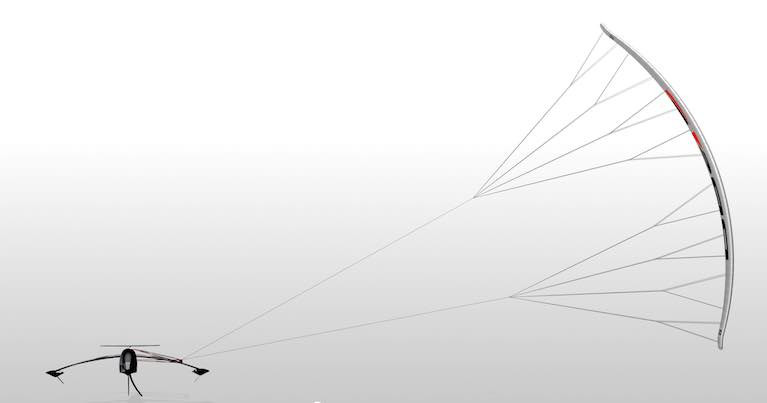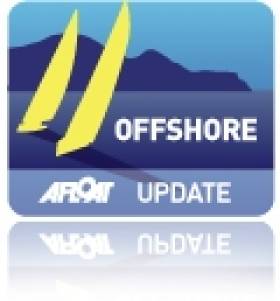Displaying items by tag: Speed Record
Mixed Catamaran Olympic Medalists Aim to Set New North Channel Sailing Record Time
Ballyholme Yacht Club on the south shore of Belfast Lough will be the start point for a record-breaking trip across the North Channel to Portpatrick on the Mull of Galloway in Scotland during the week beginning 25th September.
Team GB Olympic silver medallists and World and European Champions in the Olympic Foiling Nacra17, John Gimson and Anna Burnett, will arrive at the club on Sunday 24th September.
In association with Artemis Foiling Technology, a zero-carbon passenger ferry that is being developed in Belfast, they will make an attempt at a record.
RYA UK and Artemis aim to have any achievement recognised by the Guinness Book of Records.
 John Gimson and Anna Burnett won world silver sailing medals at August's Allianz Sailing World Championships Photo: Sander van der Borch
John Gimson and Anna Burnett won world silver sailing medals at August's Allianz Sailing World Championships Photo: Sander van der Borch
The record stands at 1hr 41 mins 28 secs held by Ian Wilson and the late Johnny Mullan of Ballyholme Yacht Club in a Tornado catamaran in 1995. Richard Swanston, also of BYC holds the single-handed record of 1hr 50mins. He still sails a Multihull. And last year, Rob Espey sailed the crossing in a Waszp in 1 hour 30min, but it hadn’t been verified.
The trophy was donated by the late Bill Wallace’s family. Bill, Vera and their children, Heather, John and Peter all sailed a Dart 18.
The crossing is made complicated and dangerous with strong tidal influences on both sides of the channel, creating steep, difficult wave formations.
The foiling spectacular Nacra17 is capable of speed more than 25 knots, so if John and Anna can keep control, the record could fall.
Swiss Challenger Pursues World Sailing Speed Record
Reaching 80 knots (150 km/h) in sailing, beating the current record set at 65,45 knots and hence becoming the fastest on water in 2022: therein lies the objective of the SP80 project. The young Lausanne team has been testing a reduced-scale prototype of the boat on Lake Geneva since June. The first results, revealed for the first time in video, are promising!
A year ago, SP80 unveiled the design of its boat to beat the World Sailing Speed Record. Today the team, composed of more than forty engineers and students from the Swiss Federal Institute of Technology in Lausanne (EPFL), conducts test after test on Lake Geneva with a prototype scaled down to 1⁄2 of the final boat. The launch of this prototype, with dimensions 4,5 by 3,5 meters, constitutes a key stage of development in the race for the record. It enables the team to validate certain concepts and start the optimization process in anticipation of the construction of the final boat which will begin in 2021.
A dozen tests have already been carried out and the results, presented in the video, are very conclusive for the team. They validate the latest simulations and demonstrate the stability and control of the boat at high speeds. These qualities, indispensable for the record, were notably attainable because of a mechanical stabilization system invented and patented by SP80.
Foxall's Bid at Round Ireland Speed Record Starts Thursday
The MOD 70 Oman Sail, a giant trimaran will attempt to break the non-stop Round Ireland Speed sailing record starting in two days time. As previously reported Ireland's Damian Foxall confirmed to Afloat.ie this morning the bid to beat the 20-year record held by the late Steve Fossett's Lakota will more than likley start off the Kish lighhouse on Dublin Bay.
The professional crew are out to beat the one day, 20 hour and 42 minute record that has stood since 1993. To do it they must average more than 15.84 knots for the entire 700-mile voyage.
Foxall and a five man crew led by France's Sidney Gavigonet can opt to circumnavigate the country in either direction. The crew expect to encounter 40–knot winds for a time after the start according to the latest forecasts for the Irish Sea on Thursday.
According to the world speed record council (WSSR) there is only one record for whatever direction the multihull takes so she may sail north or southabout around Ireland.
Under WSS rule 20d the the only approved starting/finishing line is: Dun Laoghaire: between the light on the south pier: 53° 18.1' N; 6° 07.6' W and Kish Lighthouse: 53° 18.7' N ; 5° 55.5' W
The course must enclose the whole of Ireland and the following islands or rocks:Rathlin Is, Tor Rocks and Gulf Is, Tory Is, Eagle Is, Tearaght Is, Great Skellig, Fastnet Rock, Coningbeg Rock, Tuskar Rock.
Leopard 3 Breaks Own 24-Hour Speed Record
The 100ft Canting Keel Maxi Leopard 3 has broken its own record for a 24-hour run, covering 495 nautical miles. The previous record stood at 466.4NM.
The record is in a special category for craft with powered winches, and doesn't come close to some of the other records on boats where humans work the lines by hand.
The monohull record outright is still held by Torben Grael's Ericsson 4 team who covered 596.6nm at an average speed of 24.85 knots during the last Volvo Ocean Race.
Frenchman Thomas Coville blasted through 628.5 nautical miles in 24 hours on his 105ft trimaran Sodebo, averaging 26.2 knots in the process.
But the absolute mac daddy of them all is held by Pascal Bidegorry in his monstrous 131ft trimaran Banque Populaire 5. Bidegorry travelled 908.2 nautical miles in one day, and with an average of 37.84 knots you can only imagine what his top speed was.
The World Sailing Speed Record Council announces the ratification of a new World Record for ICAP Leopard.
Record: Monohull. 24 hours under rule 21.c
Yacht: ICAP Leopard. 100ft Monohull
Name: Mike Slade and 20 crew
Dates: 31st May to the 1st June 2010.
Start time: 05.00; 31/05/10
Finish time: 05.00; 01/06/10
Elapsed time: 24 hours
Distance: 495.1 NM
Average speed: 20.6 kts
Comments: Previous record: 466.4nm 19.4 kts. May 08 Leopard. Mike Slade GBR

























